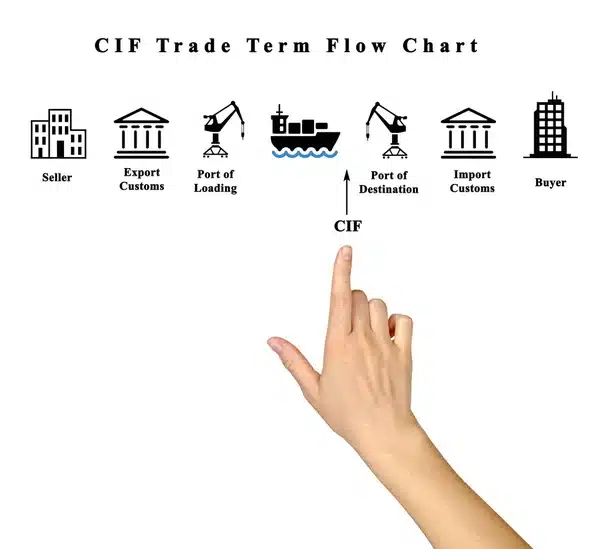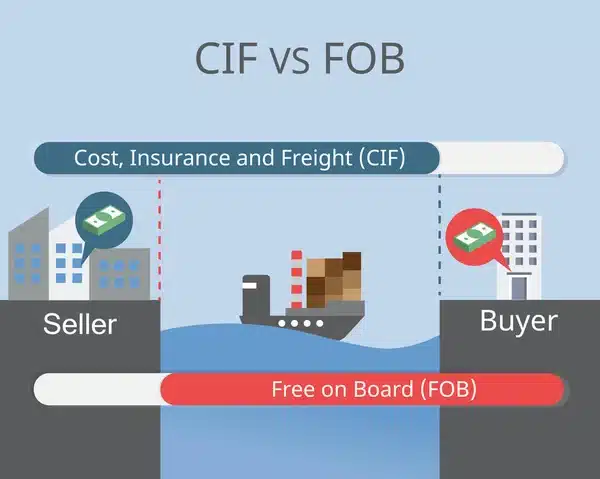What is CNF in Shipping? CNF Meaning, Full Form, and Comparison with CIF & FOB
If you’re working with international suppliers or importers—especially from China—you’ve probably come across the term CNF. But what exactly does CNF shipping mean? And how is it different from other shipping terms like FOB and CIF?
CNF, short for Cost and Freight, is a popular Incoterm used in sea freight that defines how shipping costs and responsibilities are divided between a seller and a buyer. It plays a key role in global logistics, and understanding it correctly can help you avoid hidden costs and confusion.
In this guide, we’ll explain everything you need to know about CNF Incoterms, including:
The full form and meaning of CNF
How CNF works in the Incoterms system
Key differences between CNF, CIF, and FOB
When to use CNF—and when to avoid it

CNF Meaning & Full Form
What Does CNF Mean?
CNF stands for “Cost and Freight”. It’s a shipping term used under Incoterms where the seller is responsible for the cost of transporting goods to the buyer’s destination port, but not for insurance.
Here’s what each party is responsible for under CNF:
| Responsibility | Seller | Buyer |
|---|---|---|
| Export clearance | ✅ Yes | ❌ No |
| International freight | ✅ Yes | ❌ No |
| Insurance | ❌ No | ✅ Yes |
| Import clearance & tax | ❌ No | ✅ Yes |
| Delivery to final address | ❌ No | ✅ Yes |
CNF in Incoterms
Is CNF an Official Incoterm?
Yes—CNF is an Incoterm, although the modern abbreviation recognized by the ICC is CFR (Cost and Freight). Many in the shipping industry still use CNF out of habit.
Whether you call it CNF or CFR, the rule is the same: the seller pays for the freight to your port, but you’ll handle everything else from there.
Common variants and search terms:
CNF incoterm
Incoterm CNF
CNF inco
CNF value
They all refer to the same trade arrangement.
CNF vs CIF: What’s the Difference?
CIF (Cost, Insurance and Freight) is almost identical to CNF—except it includes marine insurance.
| Term | Seller Pays | Buyer Pays |
|---|---|---|
| CNF | Freight only | Insurance + Import costs |
| CIF | Freight + Insurance | Import costs |
If you want your goods insured during ocean transit, CIF might be a better fit. But if you already have insurance or want to save on seller margins, CNF is more cost-effective.
CNF vs FOB: Who Has More Control?
With FOB (Free On Board), the buyer arranges the shipping once goods are loaded at the origin port. It offers more control but also requires more effort.
CNF, by contrast, means the seller handles the freight booking, making the process easier for the buyer.
| Comparison Point | CNF | FOB |
|---|---|---|
| Who arranges freight | Seller | Buyer |
| Risk transfer point | At departure port | Once loaded on vessel |
| Buyer control | Lower | Higher |
| Ideal for | Simplicity | Cost control & custom routing |

When Should You Use CNF?
CNF shipping is ideal if:
You’re importing by sea freight
You prefer the seller to handle shipping logistics
You’re comfortable managing customs clearance and delivery at your port
It’s commonly used for bulk shipments like:
Tools & machinery
Electronics
Clothing & textiles
Furniture
Tip: CNF is not suitable for air freight or when you require full delivery to your warehouse. In that case, consider DDP (Delivered Duty Paid) shipping.
Real-World Scenarios: CNF Shipping From China to the USA, Russia, and UAE
🇨🇳 CNF Shipping from China to the USA
Product: Home appliances
Shipping term: CNF Los Angeles
In this route, the seller arranges sea freight from Shenzhen to the Port of Los Angeles. Once the goods arrive, the buyer handles U.S. customs clearance, duties, and local delivery to a warehouse or FBA center.
Why it works:
The buyer already has a customs broker in the U.S.
It saves time coordinating ocean freight
It’s one of the most common CNF shipping lanes from China
Learn more: Shipping from China to the USA
🇨🇳 CNF Shipping from China to Russia
Product: Construction tools
Shipping term: CNF Vladivostok
The supplier handles export clearance and rail freight from Manzhouli or Suifenhe to Vladivostok. The Russian buyer then arranges inland transport to Moscow and takes care of customs clearance and VAT.
Why CNF is used:
Russian buyers have strong local logistics teams
Sellers provide flat freight costs to simplify the process
It suits bulk shipments well
Related: Shipping from China to Russia
🇨🇳 CNF Shipping from China to the UAE
Product: Furniture and home décor
Shipping term: CNF Jebel Ali (Dubai)
The Chinese supplier books sea freight from Guangzhou or Foshan to Jebel Ali Port. The buyer manages import VAT, local clearance, and delivery across Dubai, Abu Dhabi, or nearby regions.
Why CNF works here:
The UAE has efficient port clearance systems
Importers often use their own clearing agents
CNF gives flexibility without committing to DDP pricing
Learn more: Shipping from China to the UAE
Summary: CNF is a great choice when your supplier can manage international freight, and you’re confident handling the destination-side process. Whether it’s the USA, Russia, or the UAE, CNF can offer a simple and cost-effective solution if both parties understand their roles.

Frequently Asked Questions (FAQ)
What is the full form of CNF?
Cost and Freight. It’s used in international trade to define who pays for what during the shipping process.
What does CNF shipping mean?
It means the seller covers the cost of shipping to the buyer’s port, but insurance, customs clearance, and inland delivery are handled by the buyer.
Is CNF part of Incoterms?
Yes. CNF (also known as CFR) is an official Incoterm defined by the ICC.
What is the difference between CNF and CIF?
The only difference is insurance—CIF includes insurance; CNF does not.
What’s better: CNF or FOB?
It depends on your needs. CNF is easier, FOB offers more control and pricing flexibility.
Need Help with CNF or International Shipping?
At Tonlexing, we help importers manage every step of their supply chain. Whether you’re using CNF, FOB, or DDP, we’ll guide you through:
U.S. customs clearance
Local port handling
Truck delivery to warehouse
Amazon FBA prep and labeling
Contact us today for a free CNF shipping consultation or quote.


